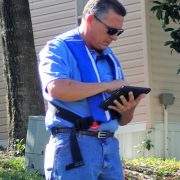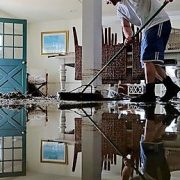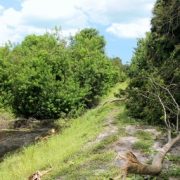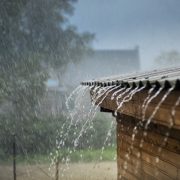Technology & Flood Control
As the end of Hurricane Season approaches, we can all breathe a sigh of relief. No more listening for storm alerts and watches. No more storing of canned-goods, batteries, and water. No more worrying about flooding. Wait; not so fast, localized flooding in South Florida is always a possibility. It is just a fact; mother nature tries every day to return our area to the original swamp lands of yesteryear, and every day the Lake Worth Drainage District’s canal system works to keep that from happening.
Occurring any time of the year, our tropical rainstorms can be intense and seriously threaten property and life. In response, District staff monitors canal elevations daily and coordinates the operations of water control structures. Water control structures act like dams, allowing stormwater to be released or held back depending on the conditions. The automated technology used to operate the District’s water control structures is called Supervisory Control and Data Acquisition (SCADA). As the water rises in the canal and reaches a pre-determined elevation, SCADA will slowly open control structures releasing water for flood control. Similarly, as water elevations return to normal levels the control structure gates will close, holding water back for conservation and water supply demands. In anticipation of severe weather, District staff can override the automated SCADA system and make manual adjustments.
Additionally, SCADA technology eliminates the need for District staff to venture out during dangerous weather conditions to operate control structures. If needed, staff can adjust a control structure via a mobile device from any location, thus significantly reducing response time. Another advantage to SCADA, is the capture of operational data by the system which can be used to evaluate future water supply needs and historical flood control responses. This data can be shared with regional water management partners for enhanced flood control coordination and water conservation measures.
With approximately 500 miles of canals and 20 major water control structures, the Lake Worth Drainage District is one of the largest water control districts in Florida. We are proud to provide our residents with this enhanced water management technology and dependable flood control







